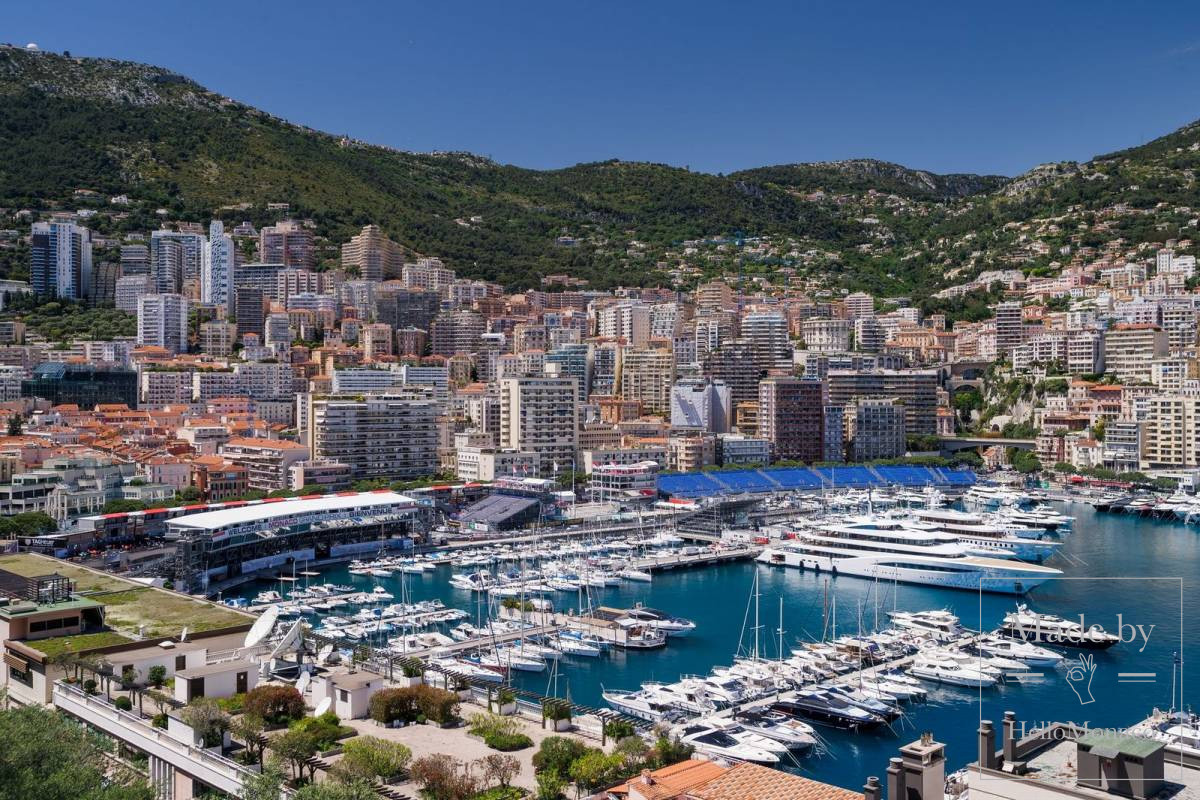Census statistics results in the Principality of Monaco were presented recently at the City Hall of Monaco by Mayor Georges Marsan and Lionel Galfré, director of the IMSEE.
The figures of the census of the Principality carried out in 2016 have just been released. According to estimates by the Monegasque Institute of Statistics and Economic Studies (IMSEE), 37,308 people resided in the Principality on 7 June 2016. This corresponds to 5.5% more than in 2008, at the time of the last census. Or an overall increase of 10,000 inhabitants in three decades.
An aging population
The average age of the population in the Principality is 46.5 years. A relatively high figure, especially in comparison with France, where the average age of the population as a whole is around 41 years (provisional figures from INSEE). Monegasque residents are also aging: the average age in 2012 was 43.8 years. It is also noted that 25.9% of the population is over 64 years old, compared with 22.68% in 2008 and 22.43% in 2000.

Large proportion of French People
The French represent 9,286 inhabitants of the Principality, or 24.89% of its total population. Among the 139 nationalities represented in the resident population, the French are leading, just ahead of the Monegasques (8,394) and the Italians (8,172). For the first time since 1982, the French population is recovering moreover. It should be noted that this number of French people includes 12.3% of people with more than one nationality.
Locals on the move
According to IMSEE’s statistics, 24.7% of the current population resided in another country on 1 January 2008. As the population increased by only 55%, we can therefore estimate the proportion of residents who have left the country during the period to be about 20%. The population is mobile; few people live in Monaco all their lives: only 32%, of which 25% are adults.
More and more main residences
Monaco now counts 17,299 main residences out of 19,534 of housing in total. In 2008, for 19,045 housing units, only 14,528 were main residences. People with housing in the Principality are therefore increasingly making it their main residence.
The results still to come
Lionel Galfré made it clear on Tuesday morning that the full analysis of the results had not yet finished. Extremely accurate studies are expected to be released in the coming weeks, and a complete dossier will be available on the I’lmsee website.

Some count twice
In the count of nationalities, we find the case of plurinationals. If we take the example of a Franco-Italian, he is counted twice: once as a Frenchman and once as an Italian. The same applies to those with 3 or 4 nationalities, etc.
Another indication of this census is the return to the rise in the number of French residents declared resident in the Principality after more than thirty years of a downward trend.
The arrival of the Russians
It should be noted that the Greeks and the Russians have made their way into the top 10 since the last census. In 2008, Monaco had 107 inhabitants. Today, the Russian community accounts for about 2% of the population with 749 members. The Russians are therefore the seventh most represented nationality in the Principality, behind France, Monaco, Italy, the United Kingdom, Switzerland, Belgium and Germany. Monaco continues to be one of the very few countries in the world where nationals are a minority.

Married people first
The census highlights certain social criteria, such as marital status. As of 7 June, 2016, 53.3% of Monaco’s residents (17 years and older) were married, compared with 45.5% of the French population. The official amount of single people in the Principality is very low (27.1%), as is the share of divorced people (11.7%). Monaco is therefore a place where people predominantlylive as married couples, contrary to what can be seen in most Western countries. This could be explained by the average age being more advanced here than in France, for example, or the fact that religion occupies a more important place in the country. Finally, 59.1% of the residents of the Principality live together.
5.5%
This is the increase in the number of residents in the Principality between 2008 and 2016. A stable increase for nearly forty years. The population of Monaco now stands at 37,308. In 1975, Monaco had 25,029 inhabitants.
Studios and 5-room homes are very prized
In its census of population 2016, IMSEE delivers fairly accurate information on the lifestyle of the resident population. It is a very useful indicator to understand and analyse certain markets such as real estate, automotive or telecommunications. In the housing sector, for example, one-room apartments or more than 5-room apartments are more popular than medium-sized apartments (between 2 and 4 rooms) in recent years. Alternatively, there is an average of 1.4 cars per main residence and 28% have at least one pet.
The figure 9/10
This is the proportion of active inhabitants who work in Monaco. Precisely, 86.1% only work in the country. The rest are mainly in France (4.2%). Finally, 3.4% work both in the Principality and in the neighbouring countries.
“To sum up, the population living in the Principality is aging, international and well-connected.” – Lionel Galfré, Director of IMSEE
So as you can see, the census statistics results show that Monaco is growing, working and thriving, with an interesting mix of nationalities.








